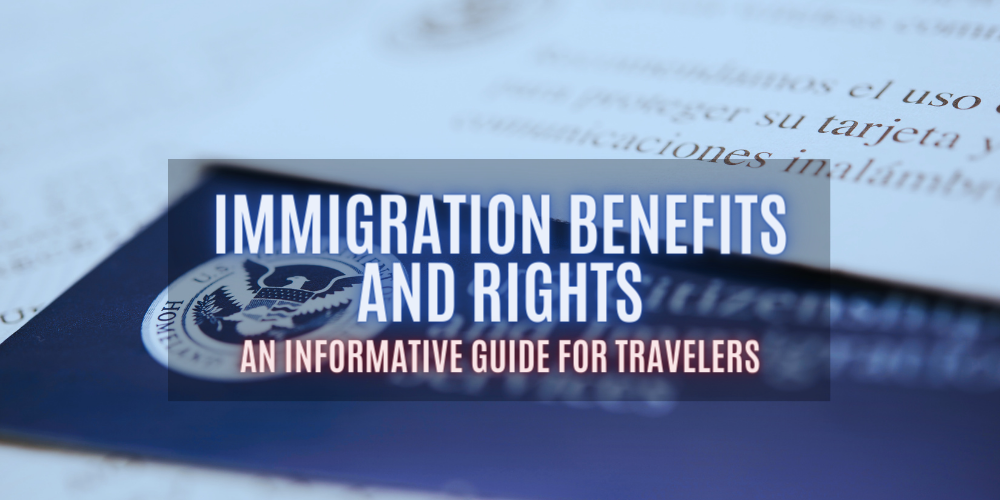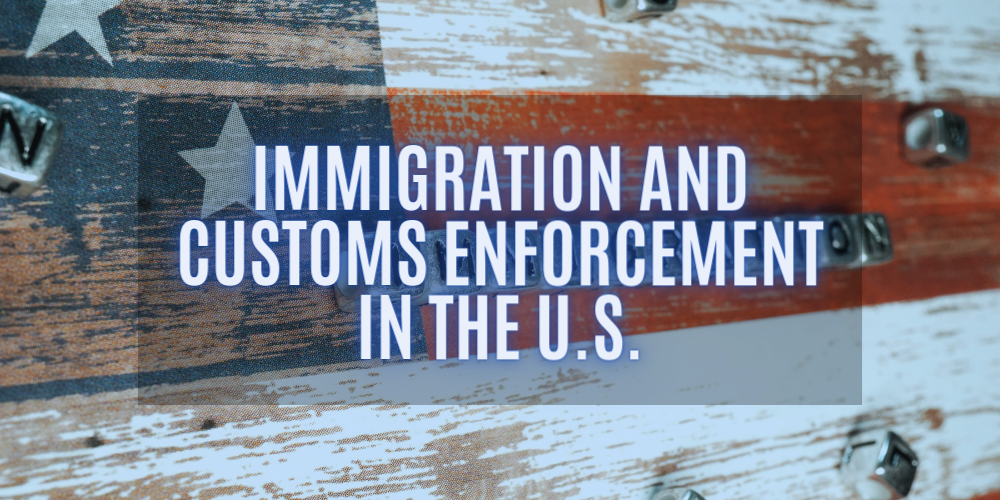--------- Travel Smarter: Essential Tips for U.S. Passport Renewal and Application
Jan 24, 2024

Navigating the process of renewing or obtaining a U.S. passport can seem daunting, but it's a crucial step for any international travel plan. Whether you're a first-time applicant or looking to renew your existing passport, this guide will walk you through each step with ease. Understanding the process is key to ensuring your travel plans go smoothly.
Understanding the Need for a U.S. Passport
A U.S. passport is more than just a travel document. It serves as an essential form of identification and is required for all international travel. A valid U.S. passport is your ticket to cross international borders and is also an essential item for re-entry into the United States. In addition to travel, it also serves as a universally recognized form of identification for various purposes both domestically and abroad.
Eligibility Criteria
To obtain or renew your U.S. passport, there are specific criteria you must meet. For first-time applicants, you must be a U.S. citizen or non-citizen national. Proof of U.S. citizenship includes a birth certificate, Consular Report of Birth Abroad, naturalization certificate, or citizenship certificate. Identification can be a state-issued driver’s license or a military ID. For renewals, your current U.S. passport, which should be in good condition, is required. If your passport was issued when you were under 16 years old or is more than 15 years old, you need to apply as a first-time applicant.
Required Documentation
The documentation required for a U.S. passport application depends on whether you are applying for the first time or renewing. First-time applicants need to provide proof of citizenship (such as a birth certificate), a government-issued photo ID, and passport photos. It's also essential to bring a photocopy of the ID. For renewals, you need your current passport and any name change documents if applicable. The U.S. Department of State's website offers a detailed checklist to help you gather the necessary documents.
The Application Process for First-Time Applicants
The application process for a U.S. passport for the first time involves several steps:
- Complete Form DS-11: This form can be filled out online and printed, or you can get a hard copy from a passport acceptance facility or a U.S. consulate or embassy.
- Gather Required Documentation: This includes your proof of citizenship, identification, and passport photos.
- Visit a Passport Acceptance Facility: You must submit your application in person at a post office, public library, or other government offices designated as passport acceptance facilities. Use the State Department's locator tool to find the nearest facility.
- Pay the Application Fee: Fees can be paid via checks (personal, certified, cashier's, traveler's) or money orders payable to "U.S. Department of State." Some acceptance facilities also accept credit cards.
The Renewal Process
Renewing a U.S. passport is often more straightforward than the initial application. Here are the key steps and differences:
- Eligibility for Mail Renewal: You're eligible for mail renewal if your most recent U.S. passport is undamaged, was issued when you were 16 or older, and is less than 15 years old. If your passport does not meet these criteria, you must apply in person using the first-time application process.
- Completing the DS-82 Form: This form is specifically for renewals and can be completed online and printed or obtained at a passport acceptance facility. Unlike the DS-11 form used for first-time applicants, the DS-82 does not require an in-person submission, making the process more convenient.
- Submit Your Renewal by Mail: Include your most recent U.S. passport, a new passport photo, the DS-82 form, and any applicable name change documents (if your name has changed since your last passport was issued). Mail your renewal application to the address listed on the form.
- Payment: As with first-time applications, payment can be made via checks or money orders payable to "U.S. Department of State." Credit card payments are not accepted for mail-in renewals.
Fees and Processing Time
As of the latest update, here are the fees and processing times for U.S. passport applications:
- Passport Book Fees: $130 for both adults (first-time applicants and renewals). For minors under 16, the fee is $100.
- Passport Card Fees: If you also require a passport card, it's an additional $30 for adults and $15 for minors. The passport card is valid for land and sea travel between the U.S. and Canada, Mexico, the Caribbean, and Bermuda but is not valid for international air travel.
- Standard Processing Time: The standard processing time for both new applications and renewals is typically 8 to 11 weeks from the date of application.
- Expedited Processing: For an additional $60 fee, expedited processing is available, reducing the processing time to about 5 to 7 weeks.
- Urgent Travel Plans: If you have urgent international travel plans, you can make an appointment at a passport agency for expedited in-person service. Proof of travel within 14 days is required for this service.
Note: It’s important to check the most current fees and processing times on the U.S. Department of State’s website as they are subject to change.
Passport Photos
One of the key requirements for a U.S. passport application is a compliant passport photo. Here are the updated guidelines and tips:
- Photo Specifications: Your passport photo must be 2x2 inches in size, taken in the last six months to reflect your current appearance. The photo should be in color with a plain white or off-white background. Your full face must be visible, and you should have a neutral facial expression or a natural smile.
- What to Wear and Avoid: Uniforms, clothing that looks like a uniform, and camouflage attire should be avoided. Normal street attire is acceptable. Glasses are not allowed in passport photos taken after November 1, 2016, unless you have a medical condition that requires them (a signed note from a doctor is needed in this case).
- Where to Get Passport Photos: Most shipping and office supply stores, as well as many pharmacies, offer passport photo services. It’s advisable to check that the photos meet all the requirements before leaving the store. Some people opt for DIY passport photos, but be cautious to meet all the specifications.
Special Cases
Lost or Stolen Passports: If your U.S. passport is lost or stolen, you must report it immediately by filling out Form DS-64. This can be done online or in conjunction with a new passport application. Once reported, the lost or stolen passport is invalidated and can no longer be used for travel.
Renewals for Minors: When renewing a U.S. passport for a minor (under 16), both parents or guardians must appear with the child and provide consent. The minor’s previous U.S. passport, a DS-11 form, new passport photos, proof of the child's U.S. citizenship, and parental ID are required. Minors’ passports are only valid for 5 years.
Name Changes: If you’ve changed your name since your last U.S. passport was issued, you must provide an official document as evidence of the name change, such as a marriage certificate, divorce decree, or court order. This documentation must be submitted along with your passport application.
Common Mistakes to Avoid
- Using Outdated Forms: Always download the latest passport forms from the official U.S. Department of State website.
- Incorrect Fee Payment: Verify current fees on the State Department website and ensure you’re paying the correct amount.
- Signatures: Forgetting to sign the application form is a common error. Make sure to sign where required.
- Incomplete or Inaccurate Information: Review your application thoroughly for accuracy and completeness.
- Poor Quality Passport Photos: Ensure your passport photos meet all the requirements. Poor quality or non-compliant photos are a leading cause of application delays.
- Underestimating Processing Times: Apply well in advance of your travel plans, considering current processing times.
- Not Reporting Changes: If there are changes in your circumstances (like a lost or stolen passport or a name change), report these promptly and follow the correct procedures.
Recent Articles

Immigration Benefits and Rights: An Informative Guide for Travelers
Understanding immigration benefits and rights is essential for anyone considering travel or relocati

SEVIS Simplified: A Complete Guide for International Students and Exchange Visitors
If you're planning to study or participate in an exchange program in the United States, understandin

Understanding ICE: Navigating the Role of Immigration and Customs Enforcement in the U.S.
Immigration and Customs Enforcement (ICE) plays a pivotal role in the U.S. immigration system. As tr

Investing in the American Dream: A Comprehensive Guide to the EB-5 Immigrant Investor Program
The EB-5 Immigrant Investor Program offers a unique pathway to U.S. residency for foreign investors

Finding Safety: A Traveler's Guide to Understanding Refugees and Asylum
Refugees and asylum seekers are central figures in the global discussion on immigration and human ri

Navigating Optional Practical Training: A Guide for International Students
Embarking on an educational journey to the U.S. opens up a world of opportunities, not just for acad
Read More

Immigration Benefits and Rights: An Informative Guide for Travelers

SEVIS Simplified: A Complete Guide for International Students and Exchange Visitors

Understanding ICE: Navigating the Role of Immigration and Customs Enforcement in the U.S.

Investing in the American Dream: A Comprehensive Guide to the EB-5 Immigrant Investor Program

Finding Safety: A Traveler's Guide to Understanding Refugees and Asylum

Navigating Optional Practical Training: A Guide for International Students

Welcome to the GovAssist blog. We know that navigating the maze of visa applications and online forms can be as tricky as choosing the perfect travel playlist (which is all we want you worrying about anyway).
Throughout our years of experience, though, we’ve uncovered a mountain of knowledge which, via this blog, we’re sharing with you! Whether you're diving into the world of travel visas, wondering about the ESTA online hustle, or just trying to figure out the DS160 form, think of us as your online concierge, here to make the process easy and most of all, clear.
At this point in our global context, who has time for endless paperwork and confusing legal jargon? No one. That's why we're all about spilling the tea on online visa hacks, easier-to-work-with DS160 forms, and giving you tips on everything from tourist visas to immigration, to that last-minute ESTA online adventure.
So, just plug in a word you’re curious about on the search bar, and boom. We've got the tips, tricks, and insider info to help you (and anyone else you may be traveling with) get to your travel destination with the confidence of a seasoned traveler.
Now go explore!